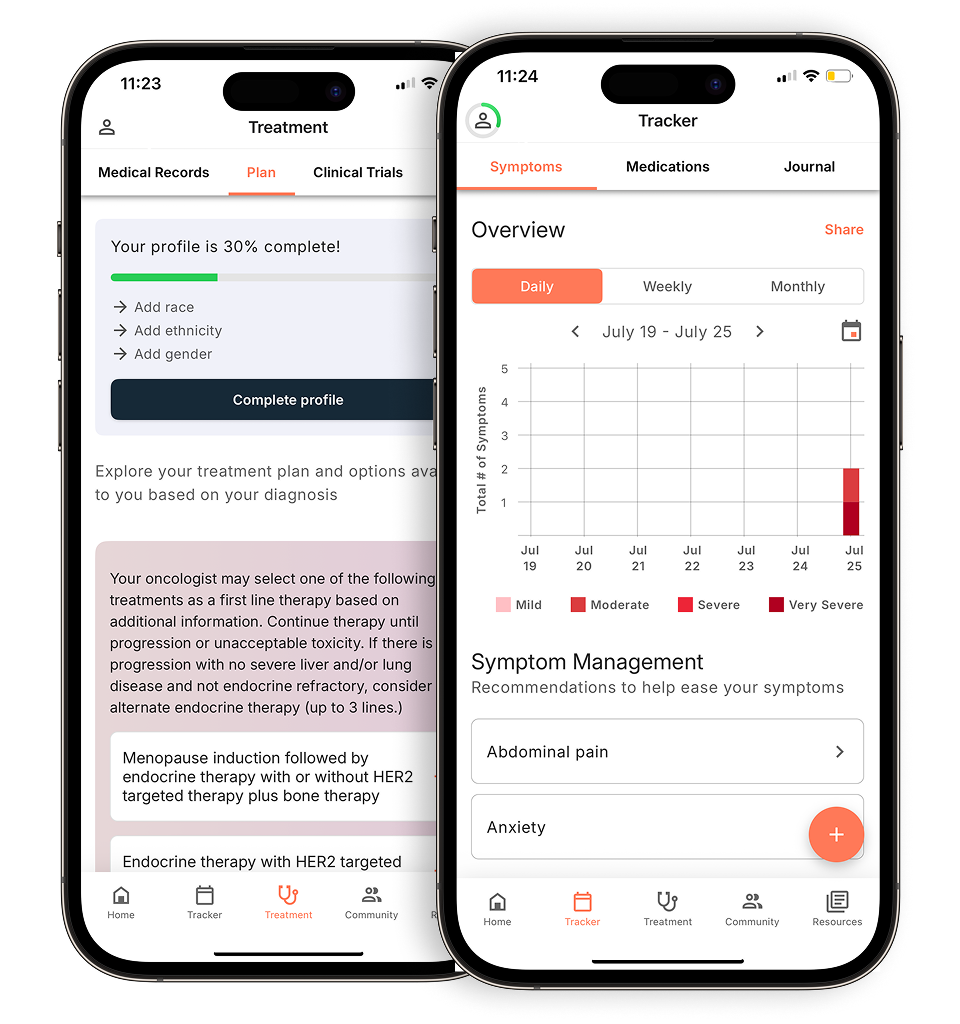Facing a lung cancer diagnosis can be overwhelming, and understanding your prognosis is a crucial part of navigating your journey. Thankfully, modern medicine provides various tools to help estimate life expectancy based on individual health data and cancer characteristics. In this blog, we’ll explore four online calculators that can assist you in estimating life expectancy with lung cancer. These tools, while not substitutes for professional medical advice, can provide valuable insights into your lung cancer prognosis.
1. Northwestern University’s Lung Cancer Outcome Calculator
Website: Northwestern Lung Cancer Outcome Calculator
Northwestern University’s Lung Cancer Outcome Calculator is a comprehensive tool designed to estimate survival rates for patients with non-small cell lung cancer (NSCLC). Here’s how it works:
- Input Data: Users need to enter specific details, such as the stage of the cancer, tumor characteristics, and patient demographics.
- Calculation: The calculator uses statistical models based on large datasets of lung cancer patients to estimate survival probabilities.
- Output: It provides a range of survival estimates, often displayed as percentages over various time periods (e.g., 1 year, 5 years).
This tool is particularly useful for patients who want a broad view of their prognosis based on standard clinical parameters. The calculator is based on data obtained from Surveillance Epidemiology and End Results (SEER) of the National Cancer Institute which is an authoritative repository of cancer statistics in the United States. The data contains lung cancer records of nearly 50,000 patients. The calculator estimates the risk of mortality after 6 months, 9 months, 1 year, 2 year, and 5 years of diagnosis
2. OHSU NSCLC Nomogram for Recurrence-Free Survival
Website: OHSU NSCLC Recurrence-Free Survival Nomogram
The OHSU NSCLC Nomogram for Recurrence-Free Survival focuses on predicting the likelihood of remaining cancer-free with or without radiotion therapy:
- Input Data: Similar to the previous tool, you’ll need to input clinical details such as stage, treatment history, and patient characteristics.
- Calculation: This nomogram uses statistical models to estimate the probability of cancer recurrence, factoring in the inputs provided.
- Output: Results are displayed as a recurrence-free survival probability, helping you gauge the chances of remaining free of cancer for a certain period.
This tool is particularly useful for patients who are in remission and want to understand their risk of recurrence. After a patient has surgery for non-small cell lung cancer, post-operative radiotherapy may be recommended for certain patients who may be at higher risk for recurrence. This calculator will estimate the additional benefit from radiotherapy, based on specific risk factors for a given patient.
Evidence-based guidance powered by NCCN Guidelines®
Personalized treatment plans shaped by the latest oncology standards—tailored to your diagnosis.
Get started
View your personalized treatment plan in the Outcomes4Me app
Use your diagnosis to unlock personalized NCCN Guidelines®-aligned recommendations.
Continue in app
3. Manchester Score for Small Cell Lung Cancer Prognosis
Website: Manchester Score Prognosis Calculator
For those with small cell lung cancer (SCLC), the Manchester Score provides a prognosis based on specific criteria:
- Input Data: Key inputs include age, performance status, and specific lab results like lactate dehydrogenase (LDH) levels.
- Calculation: The Manchester Score uses these inputs to calculate a score that reflects the likely progression and outcome of the disease.
- Output: The score translates into survival estimates, helping patients understand their prognosis in the context of SCLC.
This calculator may require you to take a more detailed look at your test results, which your oncologist may know more readily. Compared to the other 2 calculators, you might want to consult with your doctor on the appropriate way to enter your data.
Using These Tools Wisely
While these calculators can provide valuable insights, it’s important to remember:
- Consult Your Doctor: These tools are designed to complement, not replace, professional medical advice. Always discuss your results with your healthcare provider.
- Individual Variability: Life expectancy calculators are based on statistical models and averages. Individual outcomes can vary based on a range of personal health factors and treatment responses.
- Emotional Impact: Understanding your prognosis can be challenging. It’s important to seek support from loved ones, support groups, or mental health professionals if needed.
By utilizing these tools, you can gain a clearer understanding of your lung cancer life expectancy prognosis and work with your medical team to make informed decisions about your treatment and care. Remember, these survival rate estimates are just one part of your cancer journey, and your healthcare team is there to support you every step of the way.
A Note on Looking Forward
It’s worth noting that it isn’t recommended to use this tool to make a specific mortality expectancy for individuals, but instead to use it to learn more about mortality risks among given subgroups. As amazing as these tools are, take the results with a grain of salt and never make any changes to your treatment plan without consulting your doctor.
Cancer care guidance for every step of your journey
Get treatment options, clinical trials, and support tailored to your diagnosis--all in one place.
Get started
See treatment options, manage symptoms, and stay informed—all in the app
View treatment options and trials personalized to your diagnosis—plus track progress in real time.
Continue in app
FAQ's
How accurate are lung cancer life expectancy calculators?
Lung cancer life expectancy calculators use large datasets and medical research to provide estimates, but they cannot predict individual outcomes with certainty. Accuracy depends on the information entered, such as cancer stage, overall health, and treatment. They are best used as general guides rather than exact predictions.
Can a lung cancer life expectancy calculator replace a doctor's advice?
No, calculators cannot replace personalized medical guidance. Only your healthcare team can interpret test results, assess your overall health, and recommend the best treatment plan. Calculators are supplemental tools meant to provide context, not medical decisions.
What should I do if the prognosis seems less optimistic?
If the results feel discouraging, it’s important to talk with your doctor about your options. Advances in lung cancer treatments, including targeted therapies and immunotherapies, may improve outcomes. Support from care teams, clinical trials, and lifestyle changes can also make a difference.
Can I use the calculator to track my progress over time?
Lung cancer life expectancy calculators are not designed for ongoing tracking. They give a snapshot based on current information rather than a dynamic measure of progress. Regular checkups, imaging, and lab tests from your doctor are the best way to monitor changes.
Are there other tools available for lung cancer prognosis?
Yes, other tools such as staging systems, biomarker tests, and risk prediction models are commonly used in cancer care. Doctors may also use genetic testing and imaging results to create a more accurate and personalized outlook. These tools work together to guide treatment planning.
How long can you live with a mass on your lung?
The answer depends on whether the mass is cancerous and how advanced it is if diagnosed as lung cancer. Some lung masses are benign and may not affect life expectancy at all. For malignant tumors, early detection and treatment significantly improve survival chances.
How can I prolong my life with lung cancer?
Following your doctor’s treatment plan, which may include surgery, chemotherapy, immunotherapy, or targeted therapy, is the most effective way to extend survival. Quitting smoking, eating a balanced diet, staying active, and seeking emotional support can also help. Participating in clinical trials may provide access to new and promising treatments.
Related Topics
Facing a lung cancer diagnosis can be overwhelming, and understanding your prognosis is a crucial part of navigating your journey. Thankfully, modern medicine provides various tools to help estimate life expectancy based on individual health data and cancer characteristics. In this blog, we’ll explore four online calculators that can assist you in estimating life expectancy with lung cancer. These tools, while not substitutes for professional medical advice, can provide valuable insights into your lung cancer prognosis.
1. Northwestern University’s Lung Cancer Outcome Calculator
Website: Northwestern Lung Cancer Outcome Calculator
Northwestern University’s Lung Cancer Outcome Calculator is a comprehensive tool designed to estimate survival rates for patients with non-small cell lung cancer (NSCLC). Here’s how it works:
- Input Data: Users need to enter specific details, such as the stage of the cancer, tumor characteristics, and patient demographics.
- Calculation: The calculator uses statistical models based on large datasets of lung cancer patients to estimate survival probabilities.
- Output: It provides a range of survival estimates, often displayed as percentages over various time periods (e.g., 1 year, 5 years).
This tool is particularly useful for patients who want a broad view of their prognosis based on standard clinical parameters. The calculator is based on data obtained from Surveillance Epidemiology and End Results (SEER) of the National Cancer Institute which is an authoritative repository of cancer statistics in the United States. The data contains lung cancer records of nearly 50,000 patients. The calculator estimates the risk of mortality after 6 months, 9 months, 1 year, 2 year, and 5 years of diagnosis
2. OHSU NSCLC Nomogram for Recurrence-Free Survival
Website: OHSU NSCLC Recurrence-Free Survival Nomogram
The OHSU NSCLC Nomogram for Recurrence-Free Survival focuses on predicting the likelihood of remaining cancer-free with or without radiotion therapy:
- Input Data: Similar to the previous tool, you’ll need to input clinical details such as stage, treatment history, and patient characteristics.
- Calculation: This nomogram uses statistical models to estimate the probability of cancer recurrence, factoring in the inputs provided.
- Output: Results are displayed as a recurrence-free survival probability, helping you gauge the chances of remaining free of cancer for a certain period.
Personalized support for real care decisions
Understand your diagnosis, explore clinical trials, and track symptoms--all in one place.
Get started
Compare treatments, prepare for appointments, and track side effects—all in the app
Built for your diagnosis, Outcomes4Me gives you the tools to make confident, informed decisions—right when you need them.
Continue in app





